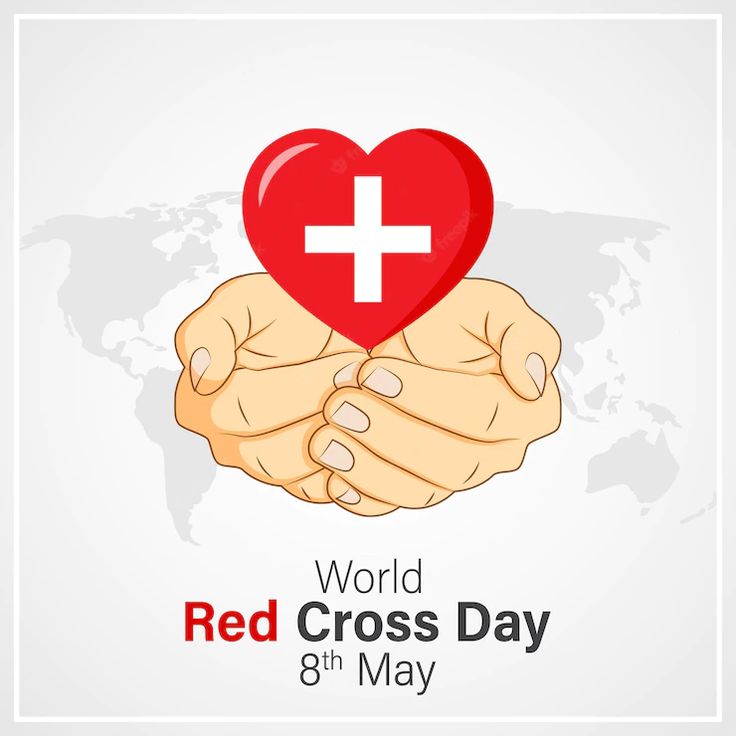World Red Cross and Red Crescent Day: Celebrating Humanity’s Commitment to Aid and Relief
Introduction
World Red Cross and Red Crescent Day is observed annually on May 8th to honor the humanitarian work of the Red Cross and Red Crescent organizations around the world. These organizations, with their iconic emblems of the red cross and the red crescent, have been at the forefront of disaster relief, medical aid, and advocacy for human rights. On this day, people come together to celebrate and reflect on the profound impact these organizations have had on saving lives, providing relief, and promoting peace in the face of adversity.
The Red Cross (and its sister organization, the Red Crescent) is one of the most recognized humanitarian entities worldwide. Founded on the principles of impartiality, neutrality, independence, and humanity, it has provided aid and assistance to people in need for more than 150 years.
What is World Red Cross and Red Crescent Day?
World Red Cross and Red Crescent Day is an annual observance created to celebrate the founding of the International Red Cross and Red Crescent Movement. The movement is an umbrella organization that includes various national societies, each working independently but united by the same guiding principles.
The day is particularly significant as it celebrates the work of volunteers, healthcare professionals, and emergency responders who dedicate their lives to alleviating human suffering. It is a chance to reflect on the efforts of these organizations and their impact on the world, as well as to raise awareness about the ongoing needs of those affected by conflict, disaster, and poverty.
History of World Red Cross and Red Crescent Day
The history of the Red Cross dates back to 1863, when Henri Dunant, a Swiss businessman, witnessed the devastating aftermath of the Battle of Solferino in Italy. He saw thousands of soldiers suffering and dying without proper medical attention. Moved by this experience, he called for the establishment of voluntary organizations to provide neutral, impartial aid to those affected by war and disaster. This vision led to the creation of the International Committee of the Red Cross (ICRC) in 1863.
The Red Crescent emerged in the late 19th century, as it was adopted by countries with large Muslim populations, who felt the symbol of the crescent would be more culturally appropriate than the cross. Both the Red Cross and the Red Crescent share the same core values and work collaboratively across the globe to provide humanitarian assistance, regardless of race, nationality, or religion.
World Red Cross and Red Crescent Day was first celebrated in 1948 to commemorate the founding of the Red Cross Movement, and it has since become a vital occasion to honor those working for humanitarian causes worldwide.
Facts About World Red Cross and Red Crescent Day
- Global Reach: The Red Cross and Red Crescent Movement operates in over 190 countries worldwide. Its mission is universal, aiming to provide assistance and protection to vulnerable people, regardless of race, religion, or political affiliation.
- Neutral and Independent: The International Red Cross and Red Crescent Movement operates under strict neutrality. This means it does not take sides in any conflict or political situation. Its goal is solely to provide humanitarian aid, regardless of the parties involved in a crisis.
- Volunteer-Based: A significant part of the work done by the Red Cross and Red Crescent is carried out by volunteers. It is estimated that over 17 million volunteers are actively involved in the movement across the globe.
- Principles of the Red Cross: The seven fundamental principles that guide the movement are humanity, impartiality, neutrality, independence, voluntary service, unity, and universality. These principles ensure that the organization’s work remains focused on aiding those in need, without bias.
- Disaster Response: The Red Cross and Red Crescent play a critical role in disaster relief efforts. Whether it’s providing food, shelter, medical care, or psychological support, these organizations are often the first to respond in the aftermath of natural disasters, conflicts, or humanitarian crises.
Significance of World Red Cross and Red Crescent Day
World Red Cross and Red Crescent Day serves as an important opportunity to:
- Celebrate Humanitarian Efforts: This day honors the tireless work of individuals and organizations who selflessly provide help to those in need. From disaster relief to healthcare, the impact of these organizations cannot be overstated.
- Raise Awareness About Ongoing Needs: Despite the Red Cross and Red Crescent’s impressive reach, there is always more work to be done. This day reminds us of the pressing challenges humanity faces, from the refugee crisis to ongoing conflicts, poverty, and public health emergencies.
- Highlight the Importance of Volunteering: The backbone of the Red Cross and Red Crescent is its network of volunteers. This day encourages people to get involved and support their local Red Cross or Red Crescent society, whether by donating time, funds, or resources.
- Promote the Principles of Humanity: The observance helps spread awareness about the values of neutrality, impartiality, and respect for human dignity that guide the work of these organizations.
How to Observe World Red Cross and Red Crescent Day
- Support Humanitarian Efforts: Consider donating to the Red Cross or Red Crescent, or volunteering with your local chapter. Even small contributions can have a big impact.
- Raise Awareness: Share information about the Red Cross and Red Crescent on social media, or host educational events to inform others about the organization’s work and principles.
- Thank the Volunteers: Take time to acknowledge the volunteers who work tirelessly to provide assistance during times of crisis. Show appreciation for their dedication and hard work.
- Promote Health and Safety: The Red Cross and Red Crescent are deeply involved in promoting health education, such as first aid training and disaster preparedness. Participate in these initiatives or encourage others to do so.
Conclusion: World Red Cross and Red Crescent Day
World Red Cross and Red Crescent Day is not just a celebration; it is a reminder of the importance of compassion, neutrality, and humanitarian values in our world. The work done by these organizations is invaluable, especially in times of disaster and crisis. Their dedication to alleviating suffering and promoting human dignity stands as a testament to the power of collective action and solidarity.
On this day, we honor the selfless volunteers and workers of the Red Cross and Red Crescent, and reflect on the significance of their ongoing efforts to make the world a better, safer place for all.










